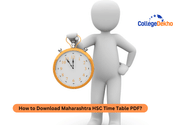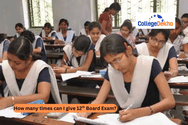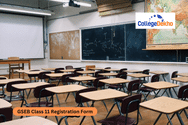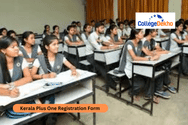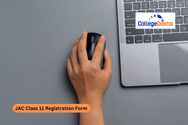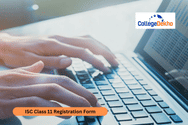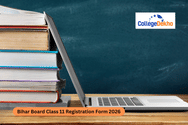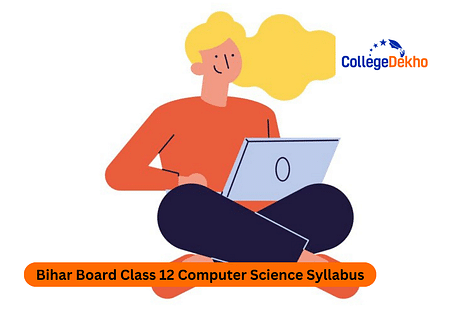

Never Miss an Exam Update
BSEB Class 12 Computer Science Syllabus 2025-26: The Bihar School Examination Board (BSEB) provided the Bihar Board 12th Computer Science syllabus 2025-26 online. The syllabus is available in PDF format. By visiting the official website, you can download the Computer Science syllabus PDF. You can also check the marks allotted to them. Programming in C++ is the chapter with highest marks. You will have to answer questions worth 30 marks. In total, the theory exam will be of 70 marks, while the remaining 30 marks are allocated to practicals and internal assessments.
All other units are equally important and provide updated knowledge of the field. From the table given below, check the detailed topics included in the units. In addition, there will be a practical exam for 30 marks. Scroll down for more information.
Bihar Board 12th Computer Science Syllabus PDF
The BSEB 12th Computer Science syllabus for 2025 can be downloaded from the official BSEB website at biharboardonline.com. A direct link to download the Class 12 Computer Science syllabus PDF is provided in the table below.
| Particular | PDF Link |
| Bihar Board 12th Computer Science Syllabus | Download Now |
Check Bihar Board 12th Exam Pattern 2025-26
BSEB 12th Computer Science Syllabus 2025-26
You can go through the table below to check the units included in the Computer Science syllabus. You should ensure that you cover up all the topics one by one.| Units | Topics | Marks |
|---|---|---|
Programming in C++ | REVIEW: C+ covered in Class-XI, Defining a symbol name using typedef keyword and defining a macro using #define directive; Need for User defined data type; Structures: Defining a Structure, Declaring structure variables, Accessing structure elements, Passing structure to Functions as value and reference argument / parameter. Function returning structure, Array of structures, passing an array of structure as argument / a parameter to a function; Object Oriented Programming: Concept of Object Oriented Programming - data hiding, Data encapsulation, Class and Object, Abstract class and Concrete class, Polymorphism (Implementation of polymorphism using Function overloading as an example in C++); Inheritance, Advantages of Object Oriented Programming over earlier programming methodologies. Implementation of Object Oriented Programming concepts in C++: Definition of a class, Members of a class - Data Members and Member Functions (methods), Using Private and Public visibility modes, default visibility mode (private); Member function definition: inside class definition and outside class definition using scope resolution operator (:): Declaration of objects as instances of a class: accessing members from object(s), Array of type class, Objects as function arguments - pass by value and pass by reference; Constructor and Destructor: * Constructor: Special Characteristics, Declaration and Definition of a constructor, Default Constructor, Overloaded Constructors, Copy Constructor, Constructer with default arguments Destructor: Special Characteristics, Declaration and definition of destructor; Inheritance (Extending Classes) : Concept of Inheritance, Base Class, Derived Class, Defining derived classes, protected visibility mode: Single level inheritance, Multilevel inheritance and Multiple inheritance, Privately derived, Publically derived and Protectedly derived class, accessibility of members (ron objects and within derived class(es): Data File Handling: Need for a data file. Types of data files - Test file and Binary file. Basic file operations on text file: Creating / Writing text into file, Reading and Manipulation of text from an already existing text File (accessing sequentially) Binary File: Creation of file, Writing data into file, Searching for required data from File, Appending data to a file, Insertion of data in sorted file, Deletion of data from file, Modification of data in a file: Implementation of above mentioned data file handling in C+*; Components of C++ to be used with file handling : Header file : fstream.he ifstream, ofstream, fstream classes: Opening a text file in in, our, and app modes; Using cascading operators for writing text to the file and reading lest from the file, open(), get(), put(). getline() and close() functions; Detecting end-of-file (with or without using of() function): Opening a binary file using in, out, and app modes; Open(), read(), write and close() functions: Detecting end-of-file (with or without using coff) function): tellg(), tellp(), seek(), seekp() functions. Pointers: Declaration and Initialization of Pointers, Dynamic memory allocation / deallocation operations; new, delete; Pointers and Arrays: Array of Pointers, Pointer to an array (I dimensional array), Function returning a pointer, Reference variables and use of alas; Function call by reference. Pointer to structures: Deference operator: *, -*; self referential structures; | 30 |
Data Structures | Arrays: One and two Dimensional arrays: Sequential allocation and address calculation: One dimensional array : Traversal, Searching (Linear, Binary Search), Insertion of an element in an array, deletion of an element from an array, Sorting (Insertion, Selection, Bubble sort), concatenation of two linear arrays, merging of two sorted arrays. Two dimensional arrays-: Traversal, Finding sum / difference of two NM arrays containing numeric values, Interchanging Row and Column elements in two dimensional array: • Stack (Array and Linked implementation of Stack) : Operations on Stack (PUSH and POP) and its Implementation in C++, Couverting expressions from INFIX or POSTFIX notation and evaluation of Postfix expression: • Queue (Circular Array and Linked Implementation) : Operations on Queue (Insert and Delete) and its Implementation in C++. | 16 |
Databases and SQL | Database Concepts: Relational data model: Concept of domain, tuple, relation, key, primary key. alternate key, candidate key: Relational algebra: Selection, Projection, Union and Cartesian product; Structured Query Language: General Concepts: Advantages of using SQL. Data Definition Language and Data Manipulation Language : Data types: NUMBER, CHARACTER, DATE: SQL Commands: CREATE TABLE, DROP TABLE, ALTER TABLE, UPDATE, SET, INSERT, DELETE, SELECT, DISTINCT, FROM, WHERE, IN, BETWEEN, GROUP BY, HAVING, ORDER BY: SQL Functions: SUM, AVG, MAX, AND MIN; Note: Implementation of above mentioned commands could be done on any SQL supported software. | 08 |
Boolean Algebra | Binary-valued Quantities, Boolean Variable, Boolean Constant and Boolean Operators: AND. OR. NO? Truth tables; Closure Property, Commutative Law Associative Law, Identity Law. Inverse law, Principle of Duality, Idem potent Law, Distributive Law, Absorption Law, Involution law, Demorgan's Law and their applications: Obtaining Sum of Product (SOP) and Product ef Sum (POS) form from the Truth Table, Reducing Boolean Expression (SOP and POS) to its minimal form. Use of Karnaugh Map for minimisation of Boolean expressions (up to 4 variables): Basic Logic Gates (NOT, AND, OR, NOR) and their use in circuits. | 08 |
COMMUNICATION AND NETWORK CONCEPTS | Evolution of Networking : ARPANET, Internet, Interspace: Different ways of sending data across the network with reference to switching techniques: Data Communication terminologies: Concept of Channel, Baud, Bandwidth (Hz. KHz, MHz) and Data transfer rate (bps. kbps, Mbps. Gbps. Tops): Transmission media: Twisted pair cable, coaxial cable, optical fiber, infrared, radio link, microwave link and satellite link. Network devices: Modem, Rj45 connector, Ethernet Card, Hub, Switch, Gateway: Different Topologies - Bus, Star Tree: Concepts of LAN. WAN, MAN; Protocol: TCP/ IP, File Transfer Protocol (FTP), PPP, Level-Remote Login (Telnet), Internet, Wireless / Mobile Communication, GSM, CDMA, WLL, 3G, SMS, Voice Mail, Application Electronic Mail, Chat, Video Conferencing: Network Security Concepts: Cyber Law, Virus threats and prevention, Firewall, Cookies, Hacking: WebPages: Hyper Text Markup Language (HTML), eXtensible Markup Language (XML): Hyper Text Transfer Protocol (HTTP): Domain Names: URL: Protocol Address: Website, Web browser, Web Server: Web Hosting. | 08 |
BSEB 12th Computer Science Practical Assessment
According to the BSEB Class 12th Computer Science Board Syllabus 2025-26, the practical assessment is worth 30 marks, and students are required to understand how the marks are distributed.
Particulars | Total Marks |
|---|---|
Programming in C++ | 10 |
SQL command | 5 |
Project work | 5 |
| Practical File | 5 |
Viva voce | 5 |
Also Check - Bihar Board 12th Previous Year Question Paper 2025-26
How to Download the BSEB 12th Computer Science Syllabus?
To download the Bihar Board Computer Science syllabus for 2025-26, students should follow these steps:
- Step 1: Visit the official Bihar Board online portal at biharboardonline.com
- Step 2: Click on the 'Syllabus' section located on the homepage. A drop-down menu will open. Select class XI-XII syllabus
- Step 3: A subject-wise PDF list will appear on the screen
- Step 4: Search for "Computer Science" from the list of subjects
- Step 5: Download the Bihar Board 12th Computer Science syllabus for 2025-26
The Bihar Board Class 12 students can keep visiting the page to get the regular update about the syllabus. All modifications in the syllabus will be reflected here. Students can accordingly prepare the subject for exams.
Are you feeling lost and unsure about what career path to take after completing 12th standard?
Say goodbye to confusion and hello to a bright future!

FAQs
Students must attempt all the questions in Bihar Board Class 12 Computer Science Question Papers within three hours. They can divide the time limit as per the sections. The sections with long questions can be provided more time.
The Bihar Board Class 12 Computer Science exam will be of 100 marks. It will be divided into a theory exam of 70 marks and practical exam of 30 marks. Students will have to score the minimum passing marks in each of them to get the pass status.
Students should first focus on completing the syllabus in detail. After completing the Bihar Board Class 12 Computer Science Syllabus 2025, students can start solving the previous year question papers for BSEB Class 12 Computer Science.
Yes, the students can divide the syllabus into smaller parts and cover up the Bihar Board Class 12 Computer Science syllabus. They can set time for different chapters and meet the targets at regular intervals.
Students can get the Bihar Board Class 12 Computer Science Syllabus from the official website of Bihar School Examination Board. The board has provided the updated syllabus online to make it easy for students to prepare for the final exams.
Was this article helpful?










